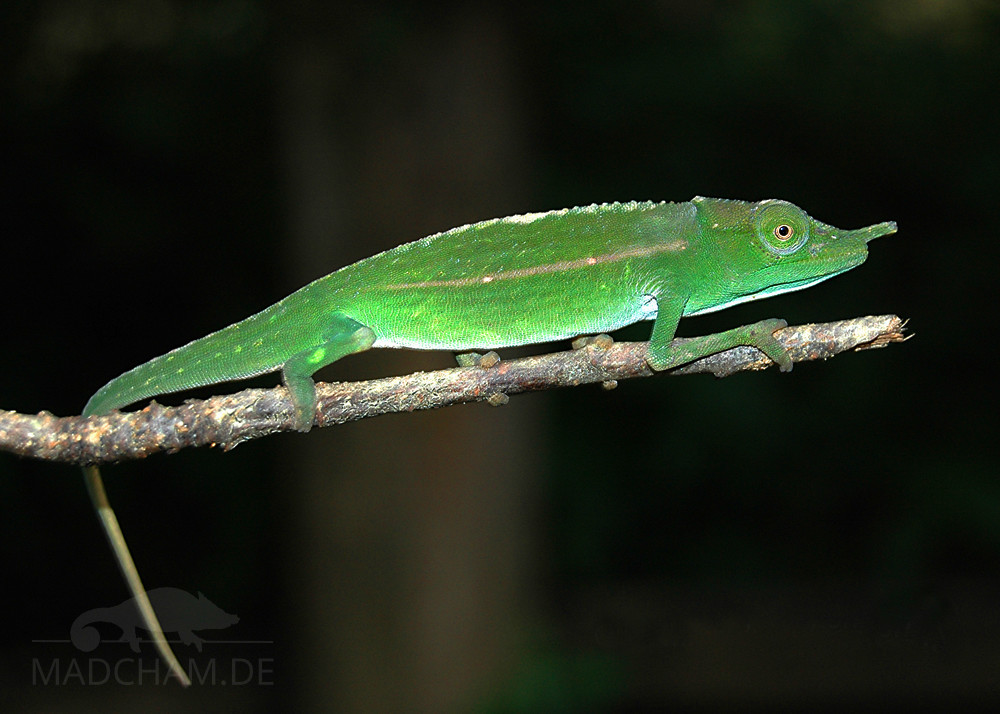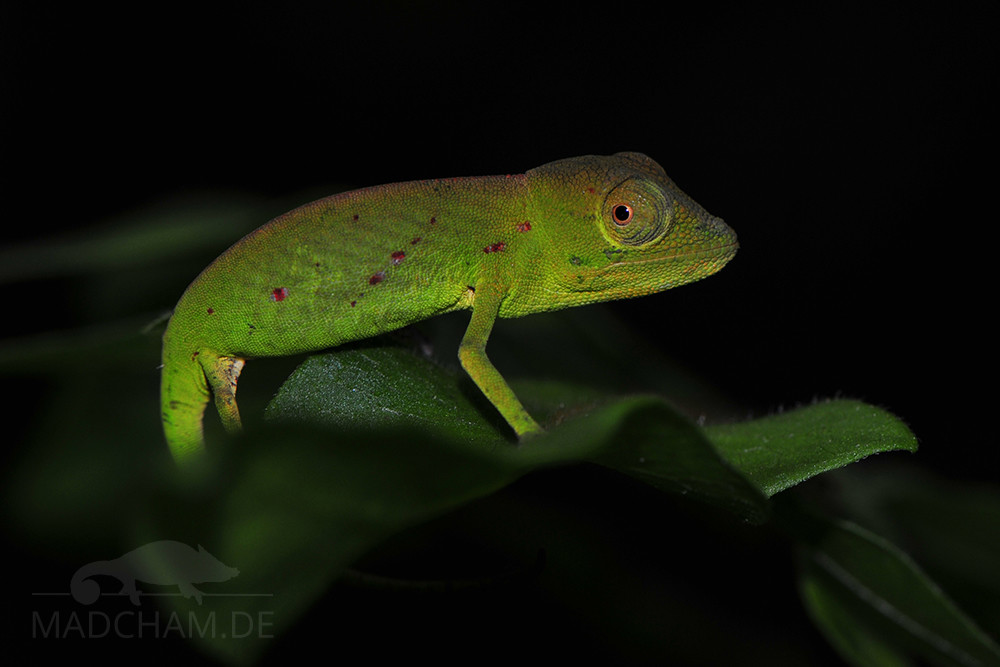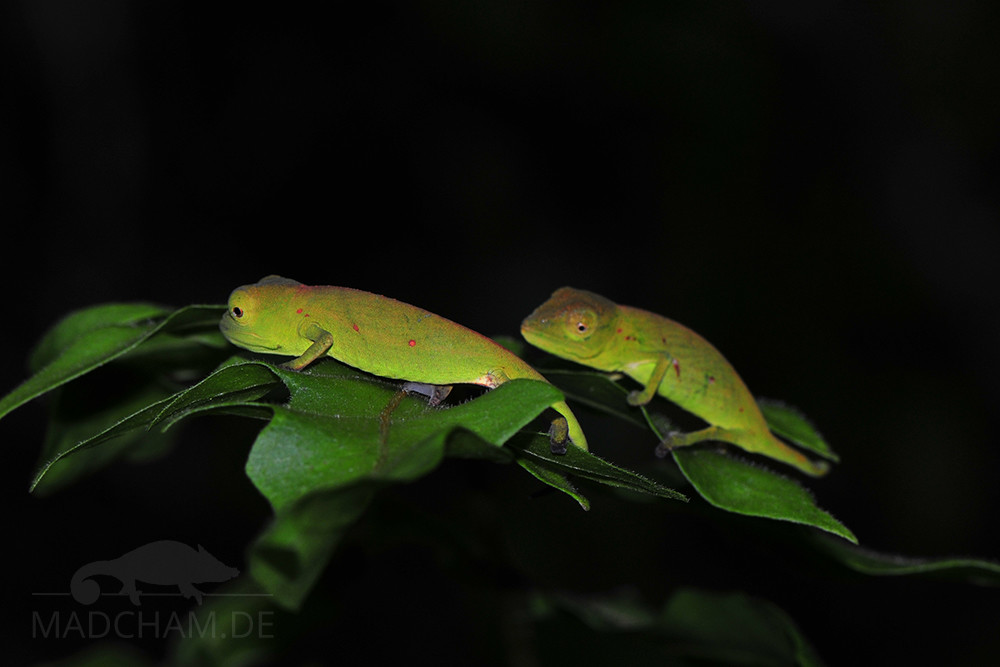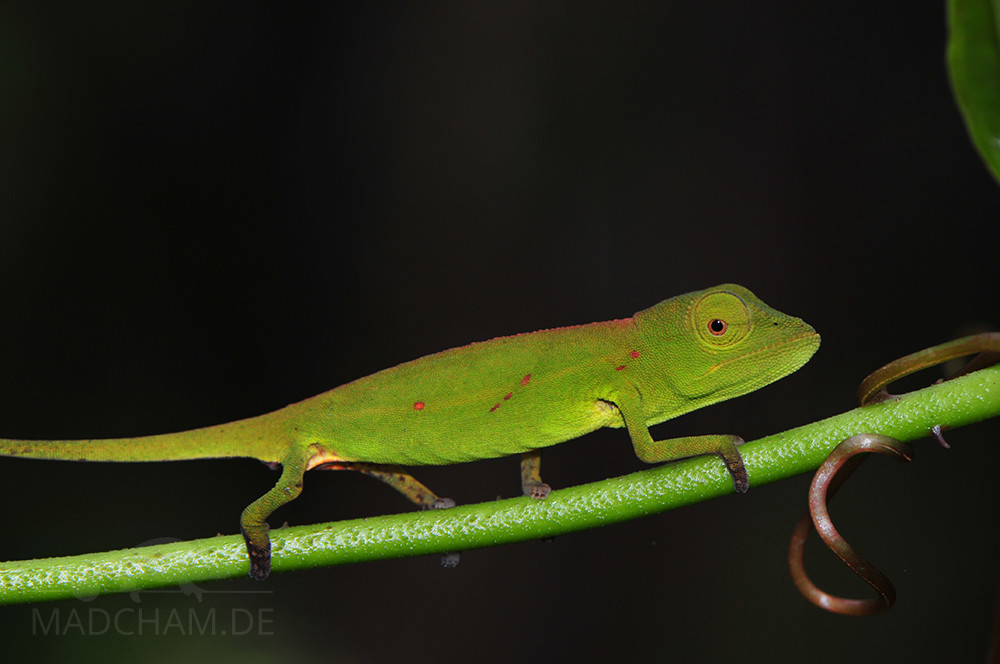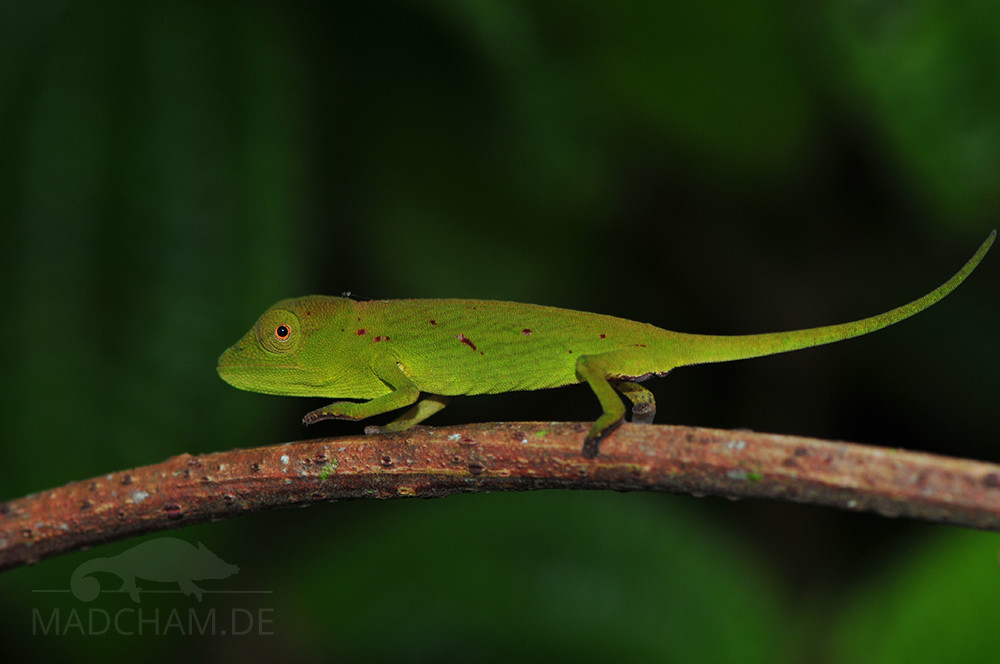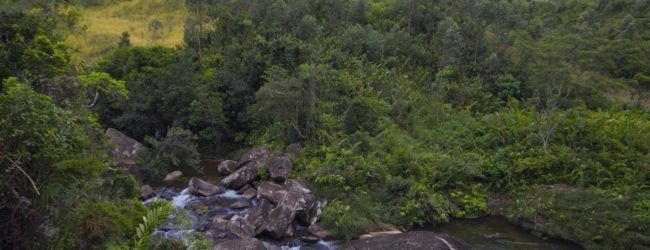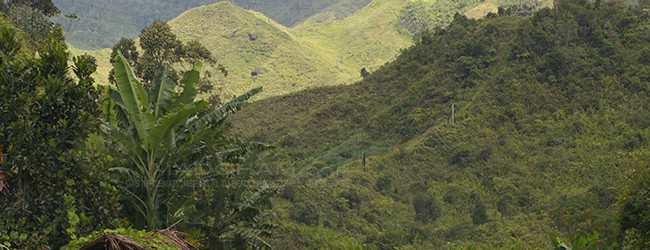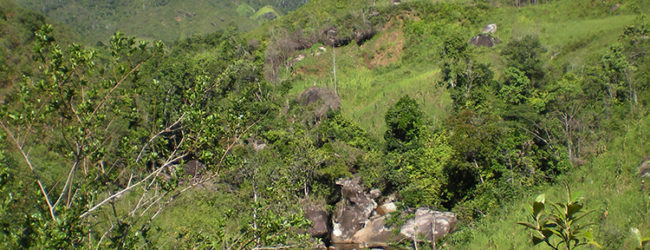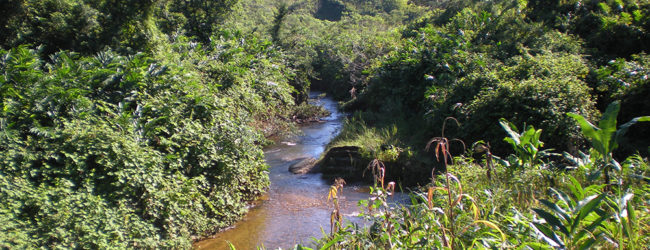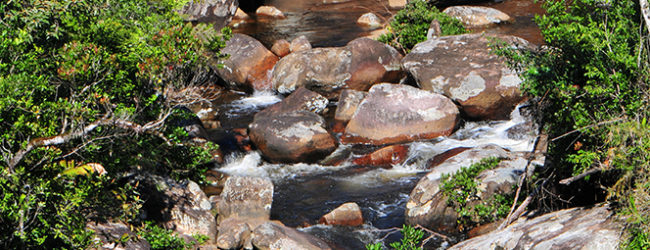no legal export possible
First description:
(Vaillant & Grandidier, 1880)
Origin of the species name:
The French zoologists Léon Louis Vaillant and Guillaume Grandidier worked together in the French Zoological Society on various publications. They named this chameleon species after the Latin furca for “fork”. It denotes the characteristic nasal process of the males of Calumma furcifer.
Distribution:
Calumma furcifer occurs in the east of the central highlands. You can find these animals about 25 km east of Andasibe national park in Vohidrazana. In this area, the primary forest is almost completely burned, and only some small areas with forest-like secondary vegetation have regrown. The chameleons live in slope regions near rivers that are difficult to access, probably since these terrains remained as of the last shelter due to its less attractive usability for firewood and grazing cattle. This residual habitat is massively threatened by slash-and-burn agriculture and will probably completely disappear in the next years. This chameleon is almost impossible to find yet. A second occurrence of this species is not far from Vohidrazana in the Vohimana reserve. However, the population in this rainforest seems to be very small, it is only very rarely found there.
Appearance and size:
Males of Calumma furcifer have a small furcated nose appendage that their species name is dedicated to. With a total length of 15 cm, they belong to the smaller or mid-sized chameleons. Their scales are grass green with an indistinct pale white lateral stripe that has two distinct white spots. The casque is flat and almost directly blends into the back. They have only a dorsal ridge with spines that have rather much distance to each other and do not continue on the tail.
| Jan | Feb | Mar | Apr | May | Jun | Jul | Aug | Sep | Oct | Nov | Dec | |
| Average temperature | 23 | 24 | 23 | 23 | 22 | 19 | 19 | 19 | 20 | 21 | 22 | 23 |
| Minimum temperature | 20 | 20 | 20 | 19 | 18 | 15 | 15 | 15 | 15 | 16 | 18 | 19 |
| Maximum temperature | 27 | 27 | 27 | 27 | 25 | 23 | 23 | 23 | 24 | 25 | 26 | 27 |
| Rain days | 27 | 24 | 26 | 19 | 17 | 18 | 21 | 20 | 15 | 16 | 20 | 25 |
We have collected the data given above over several years with thermometers and hygrometers at the finding places of the chameleons. "Average temperature" means that values of a whole month have been calculated to one average value per month. For example all measured minimum temperature values of February have been calculated to one average minimum temperature for February. In plain language, this means single peak values of a day may be a little higher or lower than the average minimum and maximum temperatures. It is possible that a location has an average maximum temperature of 29°C, but one day during that month it had 33°C or even 35°C there.
Three examples of a daily course of temperatures in Andasibe in the rainy season can be found below. Both were recorded with data loggers in 2023.
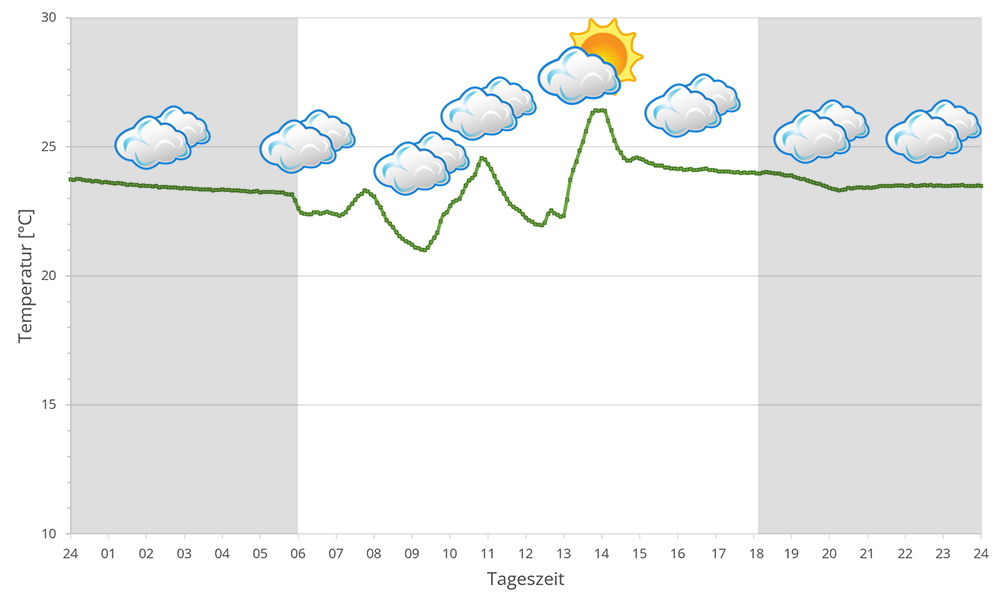
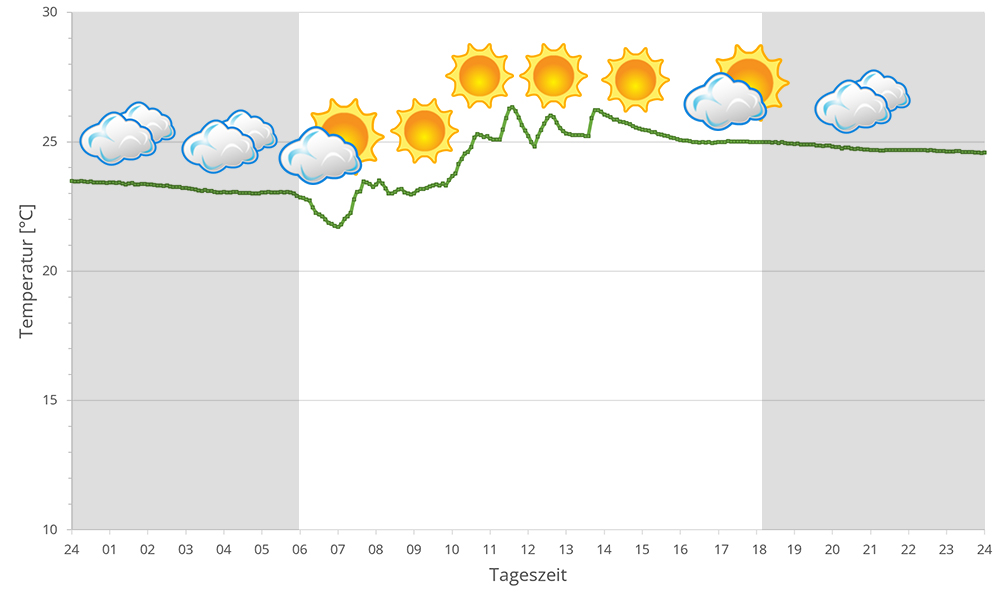
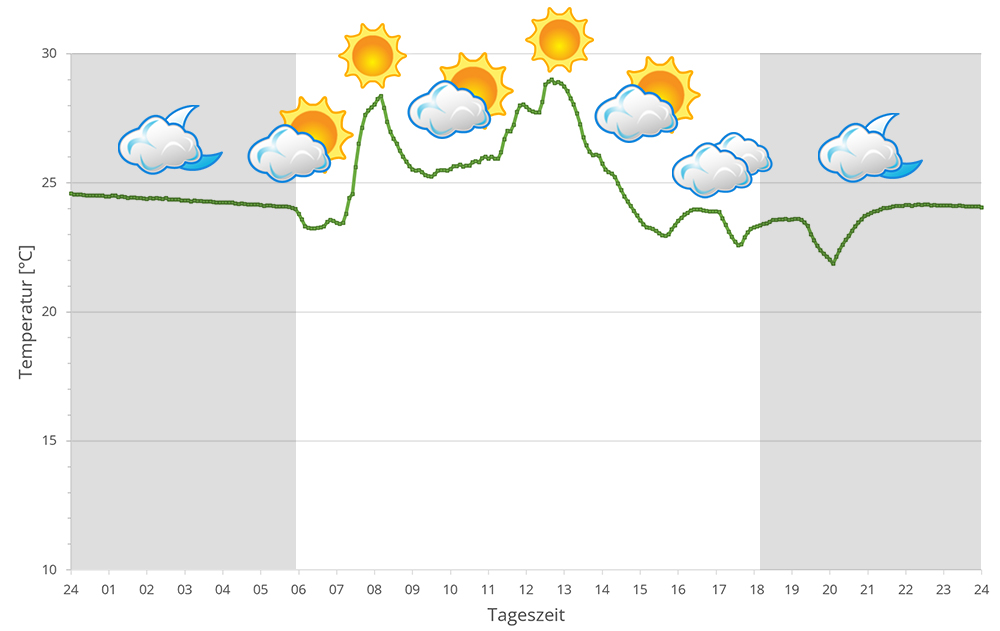
The region around Andasibe with the associated forests of Mantadia, Mitsinjo and Analamazaotra lie in the eastern highlands of Madagascar at altitudes between 900 and 1250 m above sea level. During the day, the temperature may sometimes exceed 25°C, but the thermometer rarely climbs above 30°C, or only in sunspots. At night, temperatures plummet, especially during the dry season. 10° to 15° degrees are the rule.
Humidity in the rainforests around Andasibe is high all year round. During the rainy season it rains extensively every day, sometimes the rain lasts for days. But the dry season is not massively different either, except that it has slightly cooler temperatures overall and reaches lower temperatures at night. It still rains at least every other day. Rain, high humidity and a drop in temperature at night are therefore the central points of Andasibe's climate. In 2023, we measured relative humidity with data loggers on different days in Andasibe in the rainy season, the data can be found below.
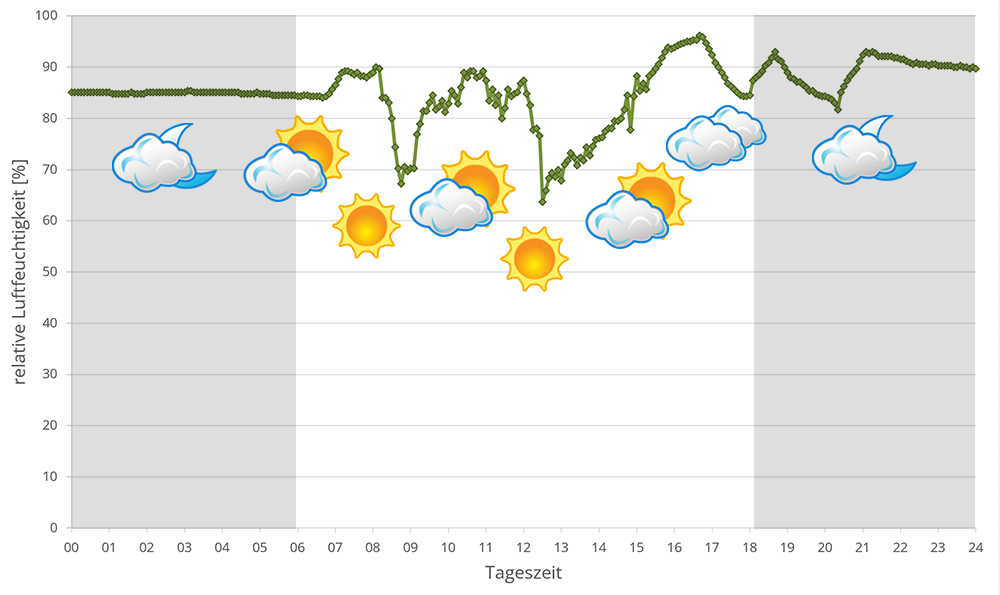
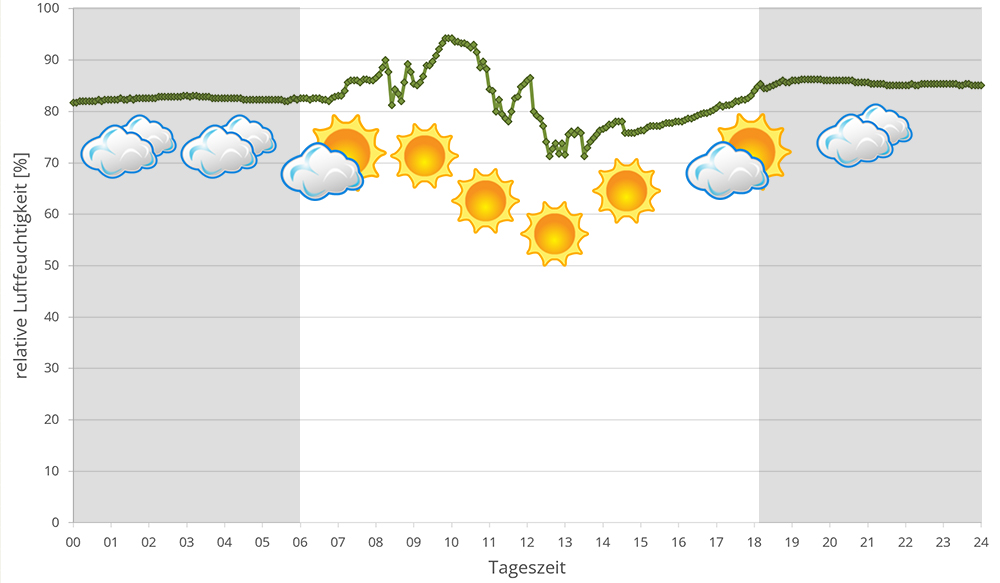
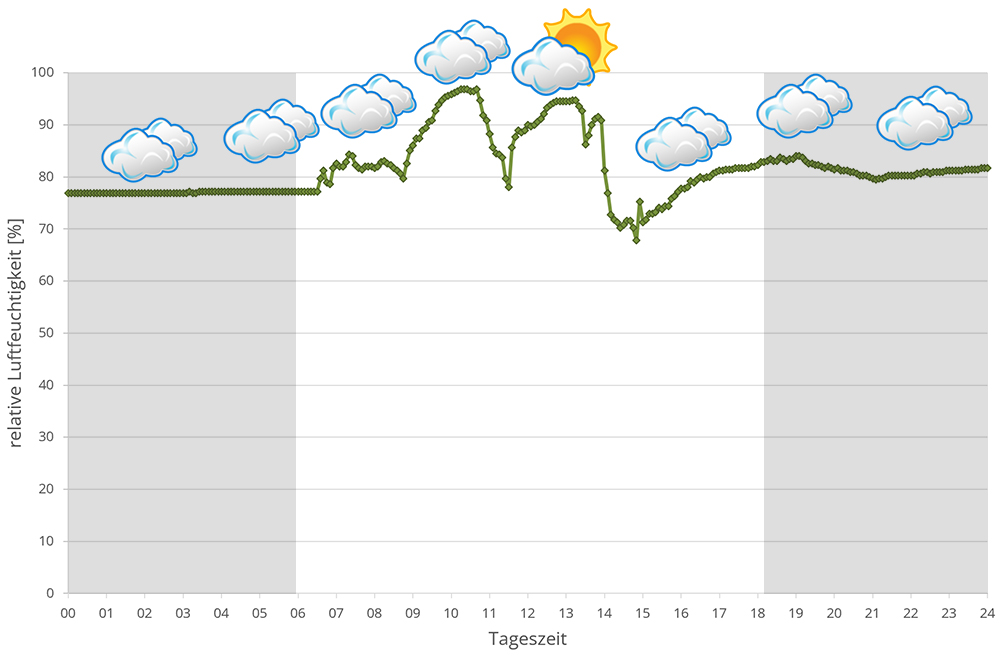
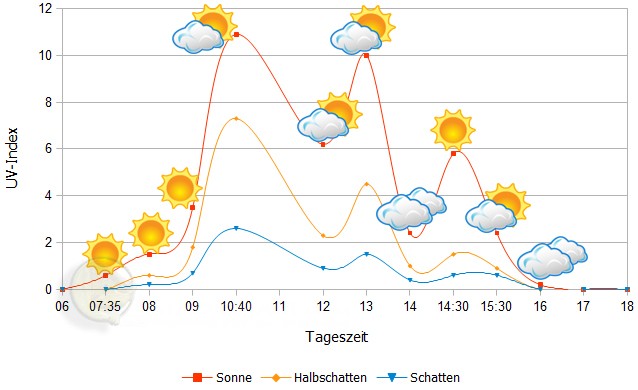
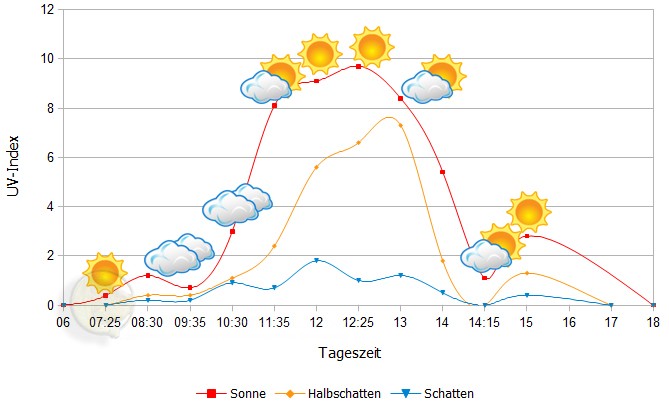 Tageszeit = day time, Sonne = sun, Halbschatten = half shade, Schatten = shade
Tageszeit = day time, Sonne = sun, Halbschatten = half shade, Schatten = shade
We have measured UVB data with a Solarmeter 6.5 in spring (March, April) at the peak of activity of chameleons in Madagascar. We always measured the values that a chameleon could maximally reach in its habitat.
| Jan | Feb | Mar | Apr | May | Jun | Jul | Aug | Sep | Oct | Nov | Dec | |
| Morning | 23,2 | 23,4 | 22,0 | 22,1 | 20,5 | 16,0 | 16,3 | 16,5 | 17,4 | 16,7 | 21,2 | - |
| Midday | 25,4 | 25,3 | 24,5 | 22,5 | 20,2 | 16,5 | 16,3 | 17,7 | 18,3 | 18,0 | 21,4 | - |
| Evening | 25,5 | 25,1 | 25,0 | 25,3 | 20,8 | 17,2 | 16,1 | 17,0 | 19,6 | 23,0 | 22,0 | - |
Between 21 March 2018 and 05 February 2019, we measured ground temperatures in the rainforest of Andasibe and surrounding areas (Analamazaotra, Andasibe, V.O.I.M.M.A. and Mitsinjo) about every other day - the table is the result of these measurements. Only in December no measurements were taken. detailed review can be found here. In total, we took 418 soil temperature measurements and measured an estimated 70 different locations in Andasibe and the surrounding area at a depth of 20 cm.
In 2023, in addition to other climate data, we also measured the air pressure at the locations we visited in Madagascar. The following data is from different days during the rainy season in Andasibe. On the X-axis is the time of day or night. In Madagascar, the day begins around 6 am, and night falls at 6 pm. The Y-axis shows the atmospheric pressure in hPa.
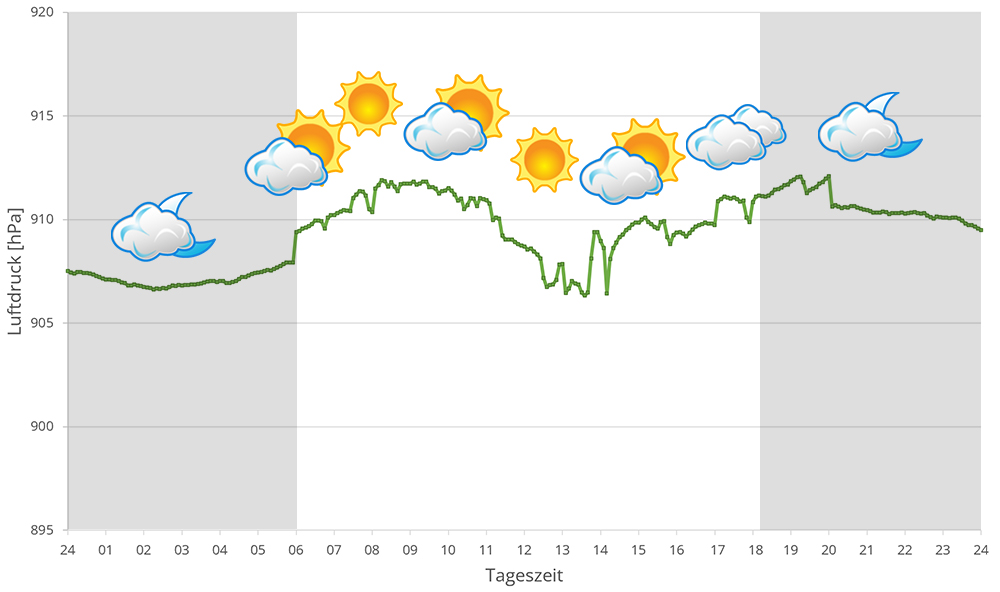
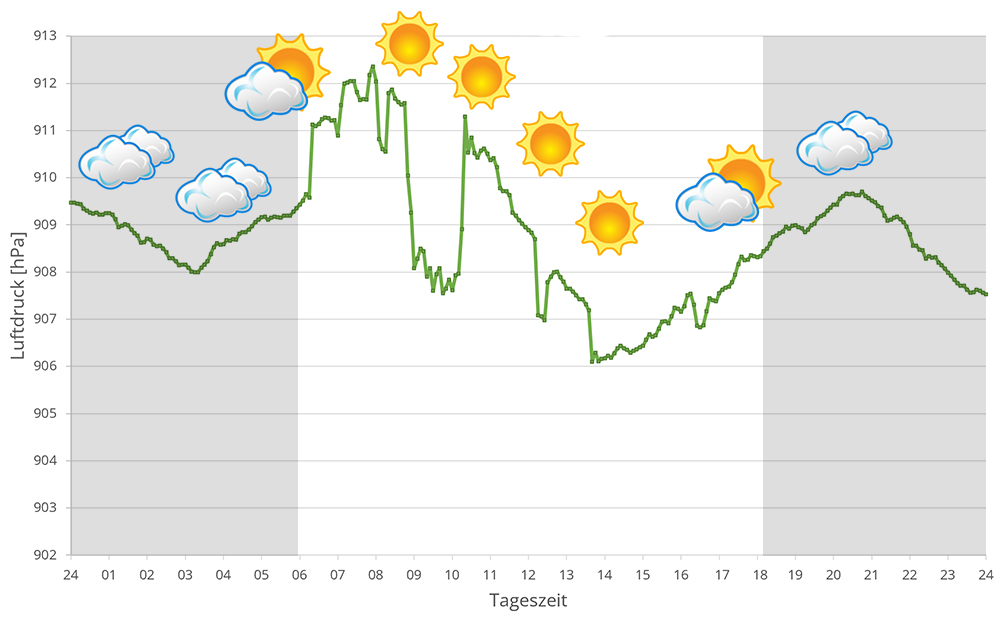
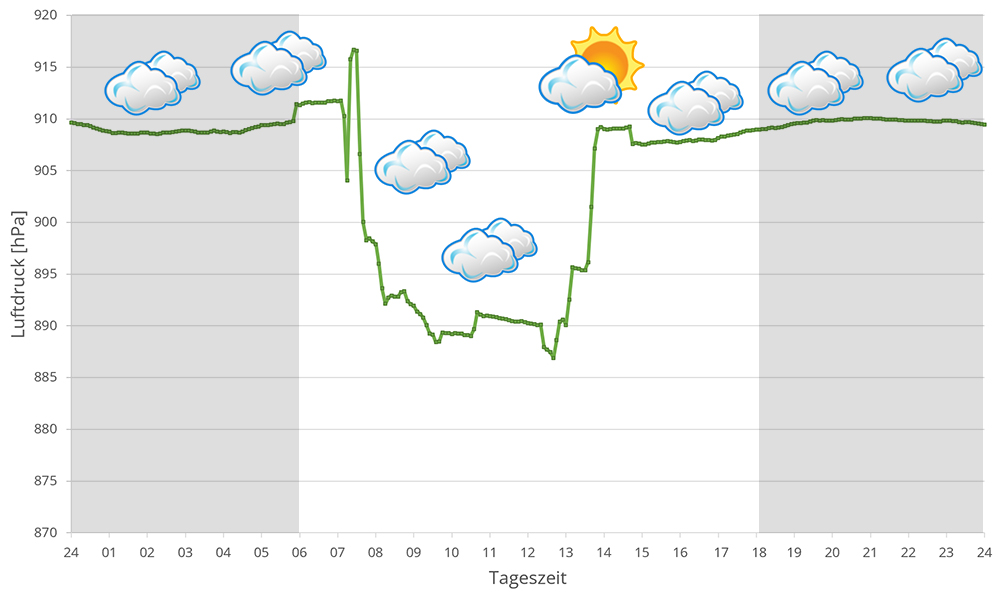
Habitat:
The following pictures show the habitat of Calumma furcifer. The area almost completely consists of secondary vegetation now, and the animals survive in bushes, shrubs and thin trees on hardly accessible hills. There has been no primary forest here anymore for decades, everything is bare around these hills. Only in Vohimana does contiguous rainforest still exist, which is also used by the animals.
Hereinafter you can find some 360° pictures from regions close to Voidrazana. You can move inside these pictures via mouse click in all directions. If you click on the Theta logo, a new window with an enlarged view will open. You will also have the opportunity to look at the pictures in full screen mode. Enjoy!
Regenwald im Schutzgebiet Maromizaha, Region Alaotra-Mangoro, östliches Hochland, Madagaskar, April 2018 – Spherical Image – RICOH THETA
Regenwald im Schutzgebiet Maromizaha, Region Alaotra-Mangoro, östliches Hochland, Madagaskar, April 2018 – Spherical Image – RICOH THETA

